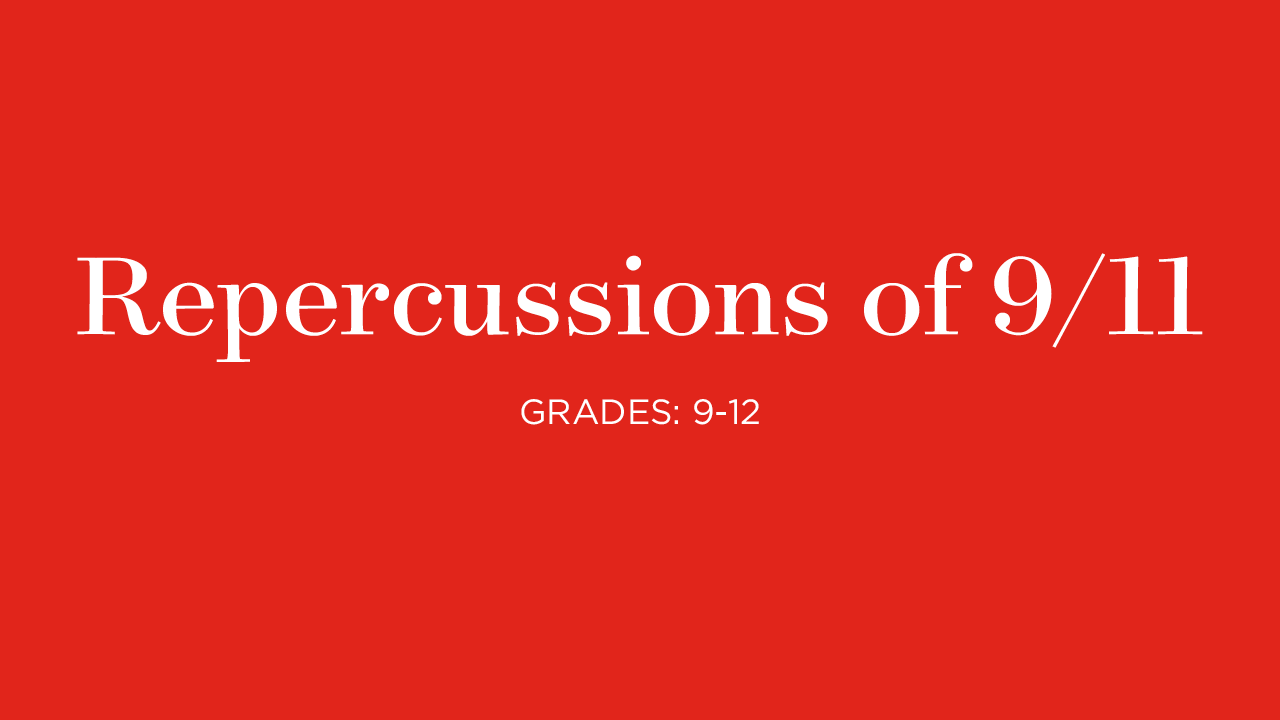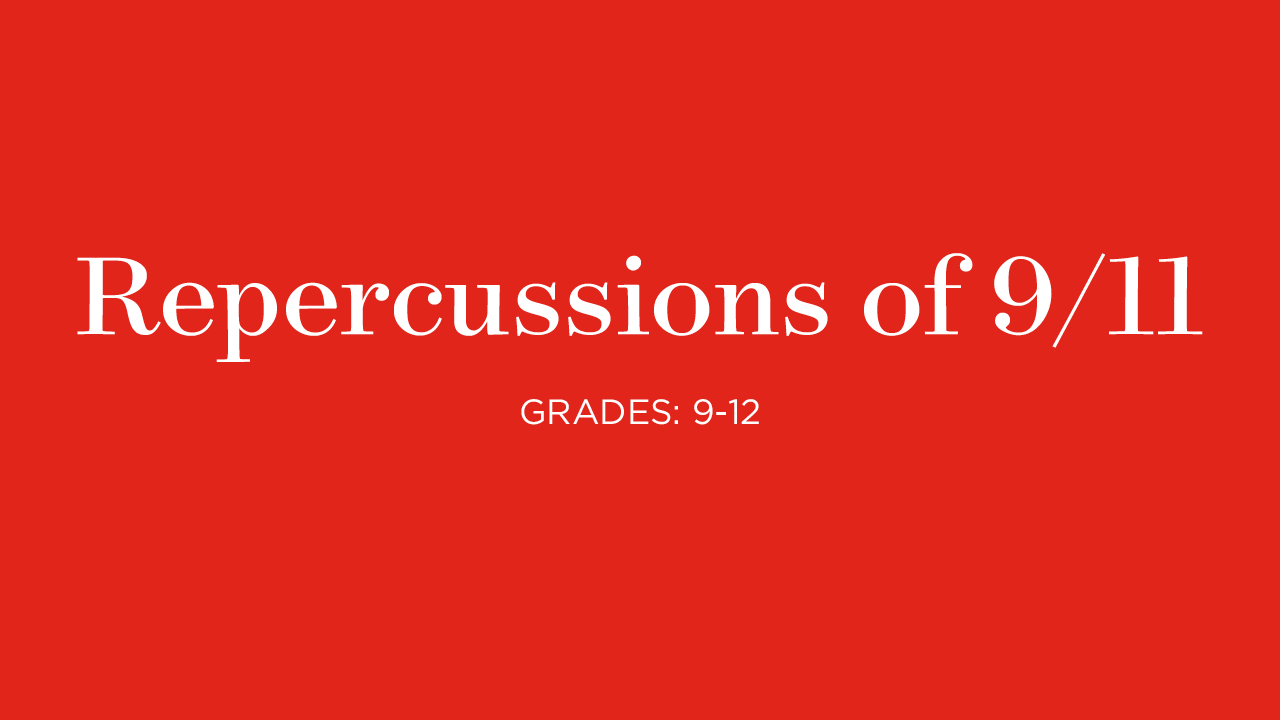Muslims in America after 9/11, Part I
Muslims in America after 9/11, Part I
- Grades 9 to 12
- Lesson Duration: One class period
- Theme: Repercussions of 9/11
Essential Question: How did attitudes toward Muslim-Americans—or those perceived to be Muslim—change after 9/11?
Learning Goals
Students will examine the concept of identity and stereotypes.
Students will investigate causes of the rise of anti-Muslim sentiment after 9/11.
Students will be introduced to multiple perspectives about Islam and terrorism, including voices from within the Muslim community.
Students will understand the difference between Islam and Islamist extremism.
Vocabulary
Islam: This is the world’s second-largest religion, founded by the Prophet Muhammad more than 1,400 years ago. Islam’s beliefs and practices center around two key sources: the Qur’an and the Hadith. An adherent of Islam is a Muslim.
Islamist extremism: “Islamists” see Islam as a guiding ideology for politics and the organization of society. They believe that strict adherence to religious law should be the sole basis for a country’s law, as well as its cultural and social life. While some Muslims believe this, many do not. Islamist extremists believe violence is acceptable to achieve these ends. Al-Qaeda is one of many Islamist extremist groups.
The Qur’an: A central religious text of the Islamic faith, the Qur’an contains what Muslims believe is God’s final revelation, made to the Prophet Muhammad, Islam’s founder, more than 1,400 years ago.
The Hadith: Another central religious text of Islam, the Hadith is a collection of Muhammad’s sayings and deeds during his life.
Stereotype: This is a set of generalizations about the characteristics of the members of a group or social category. Stereotypes simplify perceptions, but they are often exaggerated, negative rather than positive, and resistant to revision even when perceivers encounter individuals with characteristics that don’t fit the stereotype.
Prejudice: This is a negative attitude toward another person or group formed in advance of any experience with that person or group.
Cognitive shortcut: These are cognitive strategies that simplify decision-making by using mental shortcuts.
Activity
1. Tell students that they are going to be asked to think about the following questions: What makes us who we are? How do we see ourselves and others? Where do stereotypes come from and why do we use them?
2. Ask students to draw two intersecting circles on a piece of paper—a Venn Diagram. Instruct them to write words that describe how they see themselves inside the circle on the left and how others may see them based solely on visible identity markers (e.g., gender, ethnicity, etc.) on the right.
3. After a few minutes, ask students to look at the words in each circle and write any that appear in both the left and right circles in the center where they overlap. By a show of hands, ask students if they discovered any words that overlapped.
4. Pose the question, based on the responses: Do you think visible identity markers tell the full story of who you are as a person? Why or why not?
5. Explain that cognitive shortcuts are often used to lessen cognitive load in order to make quick decisions, but these shortcuts can also lead to prejudice and stereotyping based on one’s visible identity markers, often causing false assumptions. Tell students they will now look at an example of this concept.
6. Play the first 15 seconds of Dahlia Mogahed’s TED Talk, “What it’s like to be Muslim in America,” from February 2016, and then pause. Ask students to either write or share the first words that come to mind when they look at her, in response to her question. Note: You may also ask students, by a show of hands, how many censored their answers and why.
7. Ask students to draw another Venn Diagram on the back of the paper. Instruct them to write the words Dahlia uses to describe how she thinks others may perceive her based on how she looks inside the left circle, and then write the words she uses to describe herself inside the right circle, and to note any words or descriptions that overlap in the center.
8. Play the clip until 1:25 and then pause to debrief on student responses. Ask: Does anything overlap on the diagram in process? Why do you think that is?
9. Play the clip until 4:25 and pause after the line, “…turned me from a citizen to a suspect.” Ask students: How did listening to more of Dahlia’s talk change or deepen your original views of her based solely on her appearance?
10. Conclude by sharing with students that for many like Dahlia, 9/11 served as a moment that altered their perceptions of Muslim-Americans—or those perceived to be Muslim based on visible identity markers—from citizen to suspect.
11. Tell students they will investigate the rise of anti-Muslim sentiment after 9/11 in the next lesson. Point out that while the lesson focuses specifically on the Muslim experience, statistics show there has been a rise in discrimination against several different racial, ethnic, and religious groups around the world in recent years. This rise highlights the importance of examining stereotypes and their consequences.
Muslims in America After 9/11, Part II

Essential Question: How did attitudes toward Muslim-Americans—or those perceived to be Muslim—change after 9/11, and what were the consequences? Grades: 9 to 12 Theme: Repercussions of 9/11
Muslims in America After 9/11, Part III

Essential Question: How did attitudes toward Muslim-Americans—or those perceived to be Muslim—change after 9/11, and what were the consequences? Grades: 9 to 12 Theme: Repercussions of 9/11